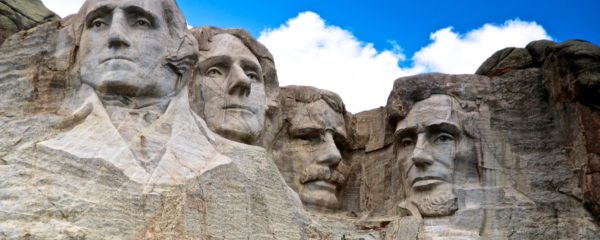COVID-19: Country Report – USA

By Fred Glickman, PM&P President North America
March 31, 2020 (Last update: April 2, 2020) Most businesses and government offices that we are aware of are working remotely for the time being. Meetings are conducted by phone or via a video link. In most locations, businesses deemed essential like groceries, pharmacies, essential services including healthcare, police, fire departments, communications and utilities are remaining open. One significant challenge is that U.S. states, counties and municipalities are deciding the extent of what activities are permitted and on how to enforce regulations including “stay at home” requirements and “social distancing”. Each state and to some extent counties and municipalities are setting their own policies, guidelines, rules and regulations on how to deal with coronavirus. There is no comprehensive Federal response to the coronavirus situation. Even though there is assistance flowing from the Federal Government, U.S. states are also fending for themselves concerning procurement of medical equipment and supplies, testing kits and ramping up each state’s capacity to meet anticipated healthcare demands. The U.S. states most severely impacted by the virus include but are not limited to New York, New Jersey and California. Some U.S. states that are not as severely impacted have less strict guidelines concerning business operations and social interaction. Currently, the State of New York and more specifically New York City has become the epicenter of the coronavirus in the United States. Not having significant Federal coordination, rules and enforcement could create an uneven response on how to handle and recover from this crisis. There was a desire on the part of the Federal Government to restart the economy and become significantly operational by April 12th. Given the present trajectory of new coronavirus cases in the U.S., a new target date for the Federal government to relax the coronavirus guidelines including social gatherings, work and schooling from home and discretionary travel has been set for April 30th. Relaxing the Federal guidelines on April 30th may be aspirational. States, counties and municipalities will have a significant say as to when business operations will return to normal and when and how restrictions on business and social activities will be phased out. The Federal Reserve and the Federal Government have taken bold steps to provide stimulus and promote economic stability in order to mitigate the negative impacts on the economy.
The Federal Reserve is pulling all the levers including interest rate cuts, credit facilities and quantitative easing. In a historic move, the US Congress passed a $2 trillion stimulus program that was signed into law by the President. This bill includes $350 billion to aid small businesses, $150 billion to aid hospitals and other healthcare providers and suppliers, unemployment insurance extension for 4 months, direct cash payments to individuals whose annual income will make them eligible and $500 billion to distressed U.S. companies in the form of industry specific loans. It is hoped that these significant Federal government interventions will bolster the economy until the coronavirus has dissipated enough to enable the U.S. economy to become fully operational. At this point in time, an accurate determination of when U.S. business will be back to normal is not easy to make. The flattening of new coronavirus cases may be the first indicator.
March 31, 2020 (Last update: April 2, 2020) Most businesses and government offices that we are aware of are working remotely for the time being. Meetings are conducted by phone or via a video link. In most locations, businesses deemed essential like groceries, pharmacies, essential services including healthcare, police, fire departments, communications and utilities are remaining open. One significant challenge is that U.S. states, counties and municipalities are deciding the extent of what activities are permitted and on how to enforce regulations including “stay at home” requirements and “social distancing”. Each state and to some extent counties and municipalities are setting their own policies, guidelines, rules and regulations on how to deal with coronavirus. There is no comprehensive Federal response to the coronavirus situation. Even though there is assistance flowing from the Federal Government, U.S. states are also fending for themselves concerning procurement of medical equipment and supplies, testing kits and ramping up each state’s capacity to meet anticipated healthcare demands. The U.S. states most severely impacted by the virus include but are not limited to New York, New Jersey and California. Some U.S. states that are not as severely impacted have less strict guidelines concerning business operations and social interaction. Currently, the State of New York and more specifically New York City has become the epicenter of the coronavirus in the United States. Not having significant Federal coordination, rules and enforcement could create an uneven response on how to handle and recover from this crisis. There was a desire on the part of the Federal Government to restart the economy and become significantly operational by April 12th. Given the present trajectory of new coronavirus cases in the U.S., a new target date for the Federal government to relax the coronavirus guidelines including social gatherings, work and schooling from home and discretionary travel has been set for April 30th. Relaxing the Federal guidelines on April 30th may be aspirational. States, counties and municipalities will have a significant say as to when business operations will return to normal and when and how restrictions on business and social activities will be phased out. The Federal Reserve and the Federal Government have taken bold steps to provide stimulus and promote economic stability in order to mitigate the negative impacts on the economy.
The Federal Reserve is pulling all the levers including interest rate cuts, credit facilities and quantitative easing. In a historic move, the US Congress passed a $2 trillion stimulus program that was signed into law by the President. This bill includes $350 billion to aid small businesses, $150 billion to aid hospitals and other healthcare providers and suppliers, unemployment insurance extension for 4 months, direct cash payments to individuals whose annual income will make them eligible and $500 billion to distressed U.S. companies in the form of industry specific loans. It is hoped that these significant Federal government interventions will bolster the economy until the coronavirus has dissipated enough to enable the U.S. economy to become fully operational. At this point in time, an accurate determination of when U.S. business will be back to normal is not easy to make. The flattening of new coronavirus cases may be the first indicator.




